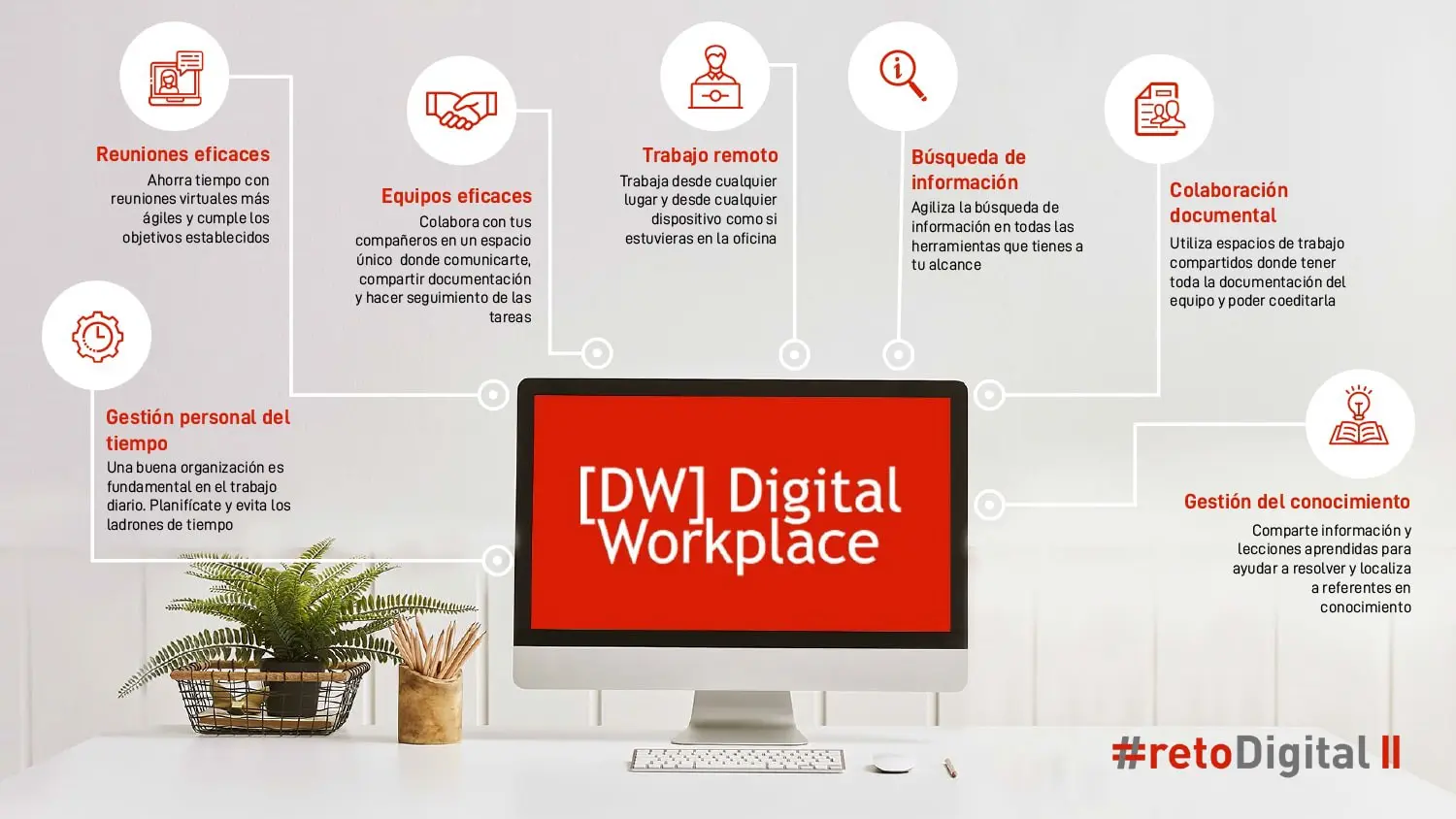TRANSFORMATION | 16.11.2020
Working from home gains momentum
In recent months, a lot has changed in terms of the way we work and in terms of people management and transformation within organizations. Before COVID-19, remote working was a way to leverage digital technology in order to be more efficient, retain talented people and improve our work-life balance. However, these days, remote working has become a necessity. This has brought benefits for many employees and has also opened up an interesting conversation around the availability of digital skills and tools, and the importance of setting limits. In the European Union alone, it is estimated that 40 percent of paid working hours were carried out from home.
The global outbreak of COVID-19 has also brought with it a colossal challenge for large organizations, which had a long way to go in order to fully implement home working. Such organizations have been faced with the decision to protect employees by allowing them to temporarily carry out their duties from home, as well as providing them with the tools to do so. Not only that, but the pandemic has also put the whole remote working model to the test by adding elements of stress, unexpected discussions, a collective spirit, transparent communication and proactive management, as well as the added commitment required during critical moments.
The ability to respond quickly to new challenges without being physically present; work in harmony like an orchestra, without even having had chance to rehearse together; encourage productivity and deepen communication are just some of the requirements expected of us when working remotely. This often translates into positive business and economic outcomes, improvements for the environment, the repopulation of rural areas and, above all, people’s well-being.
The McKinsey consultancy firm recently produced a survey of 800 executives regarding workplace disruption in our current times. The majority of respondents believe that some aspects of the remote working practices implemented during this period will remain in place in the future, although “not for everyone and not every day.” Experts agree that organizations that carry out part of their work remotely will be forced to rethink the ways in which they are currently working and decide which employees and job positions are best suited to that model, even redesigning the workplace as a whole.
According to recent data, the daily number of meetings held via Zoom around the world has increased 20-fold in recent months, and flexibility and collaborative working have soared. For years, MAPFRE has worked to be at the forefront of this move, transforming our organization through the Digital Challenge strategic initiative. More than 70 percent of our global employees make use of Skype and/or Teams, and we have significantly expanded our online training as well as our knowledge management tools, our global Intranet and collaborative communities.
Companies able to truly transform themselves become more flexible thanks to empathic leadership based on trust in the team. Great companies put people at the center and encourage employees to become the protagonists, each leading their own career as far as they can and want to go. Evolving to take risks, taking advantage of the situation, optimizing the use of collaborative platforms and making the most of all the tools at their disposal. According to the latest study by Eurofound—the European Foundation for the Improvement of Living and Working Conditions—in July, almost 80 percent of workers said that they preferred working from home occasionally.
Employees as the protagonists and the Digital Workplace

During an online seminar on digital workplaces, organized by the Vodafone Observatory and also attended by managers from Cuatrecasas and Repsol, MAPFRE Group Chief People Officer Elena Sanz highlighted the benefit of implementing a hybrid system, including both remote work and office work, because “we must take steps in a new direction and lay a route toward flexibility.” In her opinion, being physically present in the workplace “is not essential for determining the achievements” of employees.
During the lockdown, remote working created a number of added burdens, which most commonly included more time spent on family and domestic tasks, emotional overload, and the pressure to ensure that children were able to continue their education online, to name but a few.
Elena Sanz: “we must take steps in a new direction and lay a route toward flexibility”
Now, MAPFRE is once again looking at remote working, providing the necessary technology to employees (with a newly established Digital Workplace) and working to continually improve and personalize their experiences. The move toward this new environment as part of the Digital Challenge strategic initiative has allowed nearly 34,000 employees across the world to evolve toward a more efficient and collaborative way of working, with dynamic, digital structures tailored to the needs of each person.
In previous years, MAPFRE has made other important changes in the same direction, such as open spaces, 360-degree feedback and work oriented toward objectives and projects, among others.
Click here to find out more about the MAPFRE Digital Challenge II.


